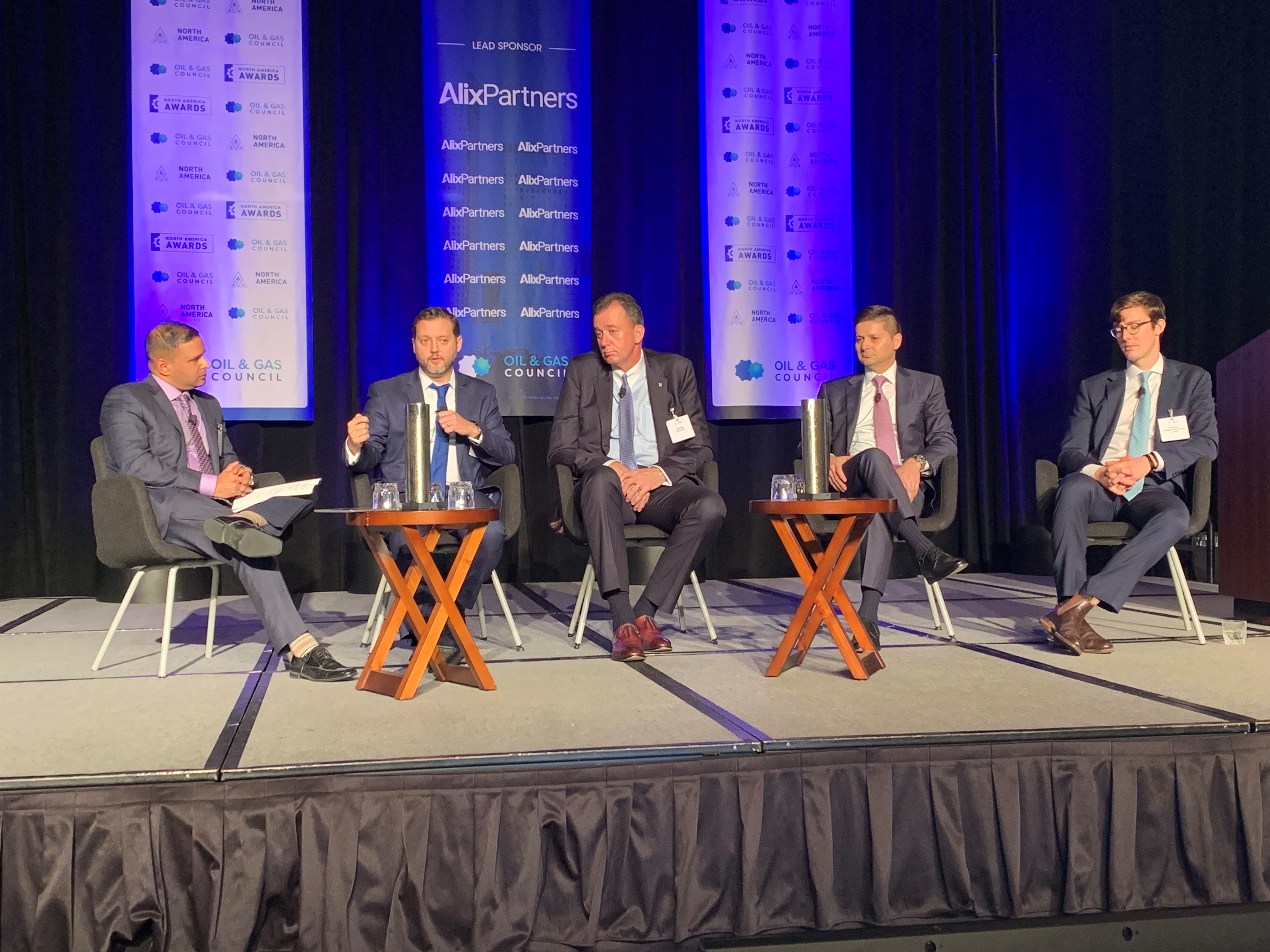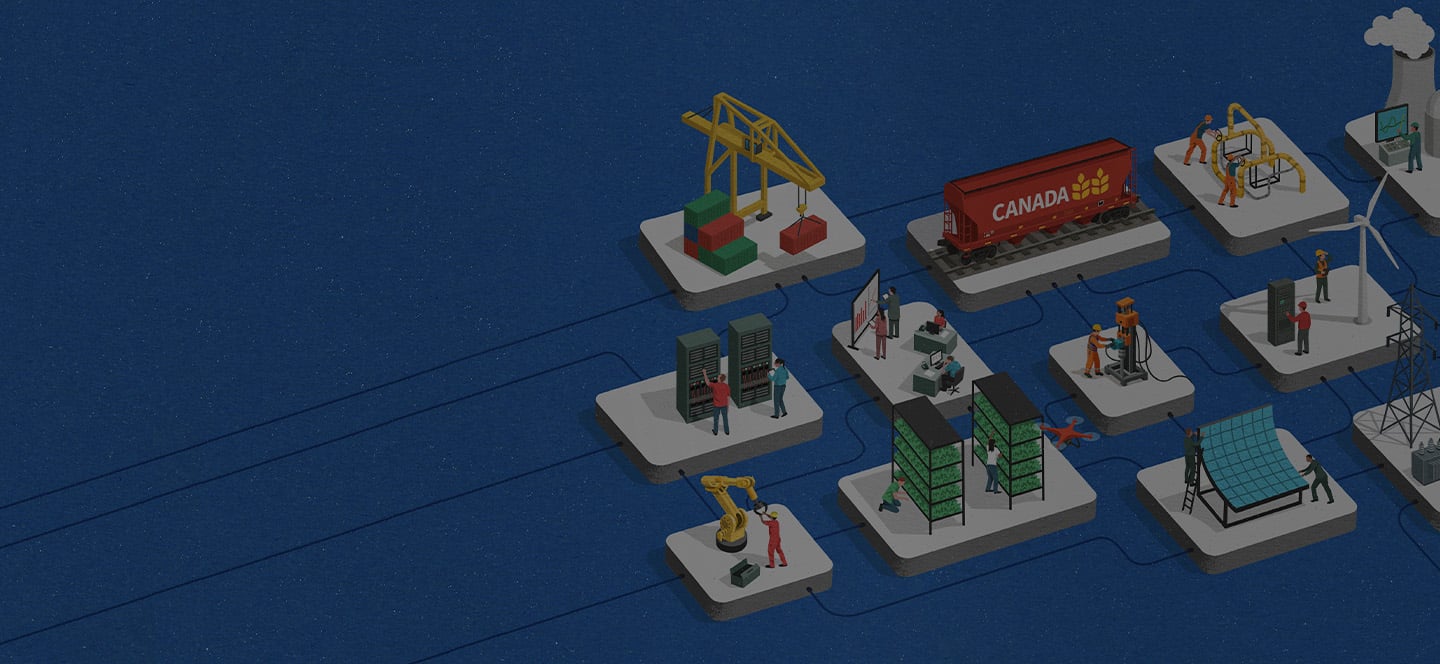Vivek Warrier moderated the panel on Gas and LNG in North America at the Oil & Gas Council's recent North American Assembly in Houston. Panel members were:
- Eric Dyer - CFO, Tamboran Resources
- Greg Vesey - Chief Executive Officer & Managing Director, LNG Limited
- James Wyper - Managing Director, Stonepeak Infrastructure Partners
- Carlos Wheelock - Head of LNG – Americas, Vitol
What was a main take-away from the Gas and LNG panel?
 |
|
Vivek Warrier moderating the panel on
|
Vivek Warrier (VW): One of the key take-aways is the extent to which environmental, social and governance (ESG) concerns are driving growth in the LNG space. As energy demand grows in Asia, various governments have reflexively turned to emissions intense coal fired generation to meet incremental demand.
Natural gas has less than half the emissions intensity of coal. Natural gas can displace coal in Asia and reconcile the need to reduce emissions with increased power demand. Recognition of this fact is driving LNG export growth in North America and intensifying demand for LNG in Asian markets. In Europe, countries that have not already done so are also aggressively planning to phase out coal.
The United States is the top producer of natural gas in the world and Canada is fourth. What's needed to keep North American LNG exports growing?
VW: Both the United States and Canada possess massive reserves of natural gas that well exceed several lifetimes of domestic demand. It is commercially intuitive that excess resource should be exported to meet demand, and help reduce emissions, elsewhere.
What's needed is investment in regasification and distribution infrastructure in Asian and European markets. Gas-to-power projects can be expensive and challenging. While countries like China and India have the resources to undertake such large scale LNG developments, smaller markets in Asia may not. According to our panellists, the solution may be more integration along the value chain, with LNG exporters providing some assistance in underwriting downstream regasification facilities.
What are new trends in structuring and financing in the LNG sector?
VW: At the most basic level, an LNG export facility and all the related facilities along the value chain are essentially a long-life infrastructure play. Our panellists noted that this base structure can give rise to diverse economic models. In the United States we have seen the emergence and demonstrable success of tolling models where the facility owner charges a fee to liquefy and sell LNG, without having any ownership or involvement in the underlying resource. In other countries we are seeing ever greater horizontal integration with producers, LNG exporters and off-takers equalizing ownership across the entire LNG chain, creating more alignment between partners. The advance of floating LNG technology is enabling developments on a smaller scale.
The price of natural gas, and the fact that LNG export facilities take years to build, continue to be critical considerations. Market demand doesn’t necessarily coincide with pricing fluctuations. That’s one of the reasons more long term partnerships in the sector are anticipated.
What is the view from the United States on the Canadian LNG industry?
VW: The panel agreed that Canada needs to get comfortable with building pipelines again. We know from a Canadian perspective there is broad support for gas pipelines and the need to develop a domestic LNG industry. Both the federal and BC provincial governments are steadfastly in support of the $40 billion LNG Canada plant in Kitimat, and there is increased interest from around the world in the value proposition of Canadian LNG. Shorter shipping distances and our reputational advantage of having a rigorous regulatory system attuned to climate concerns are clear advantages. There was agreement that Canada should also look to our East coast to potentially serve European markets.
The panellists also were universally of the view that Canada needs to do a better job of telling the compelling ESG story around the Canadian natural gas industry . . . and tell it well. Displacing coal in Asia with Canadian LNG has a strong appeal, but the window of opportunity has its limits.
What's the state of the LNG industry in the United States and where are the opportunities?
VW: The opportunities in the United States are huge. Just last week, four new LNG export projects were approved by the Federal Energy Regulatory Commission, adding to seven others that were approved earlier this year.
Supply-wise, the United States set new records in natural gas production, consumption, and exports in 2018. It's remarkable that in 2014, LNG accounted for just 1% of total U.S. natural gas exports. In 2018, it's 30%.
Investors and companies are being more strategic. LNG producers are looking for new sources of customer demand. Fluctuating natural gas prices are a concern, as is the difficulty in forecasting the market on a long term basis. Commercial viability and environmental pressures will continue to affect demand growth.
350 C-level business leaders from 320 organizations attended the North American Assembly in Houston. How did you enjoy moderating the Gas and LNG panel?
VW: I would like to thank the Oil and Gas Council for once again organizing a first class executive calibre event. I would also like to express my gratitude and appreciation to the members of our LNG panel. Each of these individuals have an extraordinary depth of knowledge regarding the LNG industry derived from multifaceted engagement with the sector. The panel delivered sophisticated insights on every aspect of the LNG value chain, from project development, feedstock and offtake dynamics across the globe, global pricing trends and geo-political and climate related challenges.











